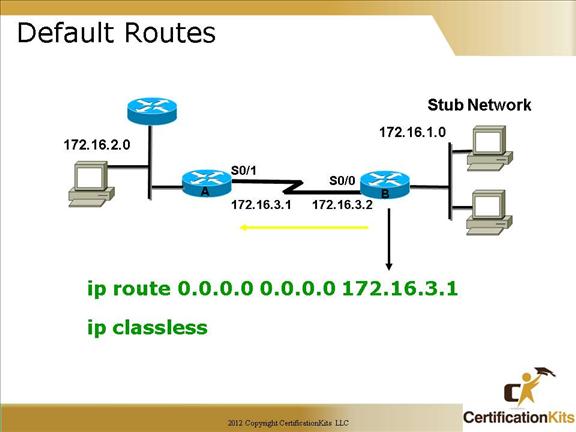In computer networking, the default route is a setting on a computer defining the packet forwarding rule to use when no specific route can be determined for a given Internet Protocol (IP) destination address. All packets for destinations not established in the routing table are sent via the default route.
Overview
The default route generally points to another router, which treats the packet the same way: If a route matches, the packet is forwarded accordingly, otherwise the packet is forwarded to the default route of that router. The process repeats until a packet is delivered to the destination. Each router traversal counts as one hop in the distance calculation for the transmission path.
The device to which the default route points is often called the default gateway, and it often carries out other functions such as packet filtering, firewalling, or proxy server operations.
Detail
The route evaluation process in each router uses the longest prefix match method to obtain the most specific route. The network with the longest subnet mask that matches the destination IP address is the next-hop network gateway.
The default route in Internet Protocol Version 4 (IPv4) is designated as the zero-address 0.0.0.0/0 in CIDR notation, often called the quad-zero route. The subnet mask is given as /0, which effectively specifies all networks, and is the shortest match possible. A route lookup that does not match any other route, falls back to this route. Similarly, in IPv6, the default route is specified by ::/0.
In the highest-level segment of a network, administrators generally point the default route for a given host towards the router that has a connection to a network service provider. Therefore, packets with destinations outside the organization's local area network, typically destinations on the Internet or a wide area network, are forwarded to the router with the connection to that provider.

